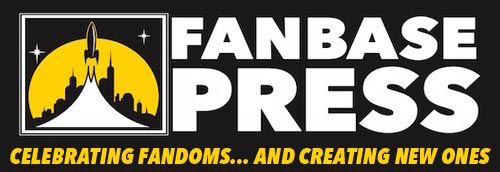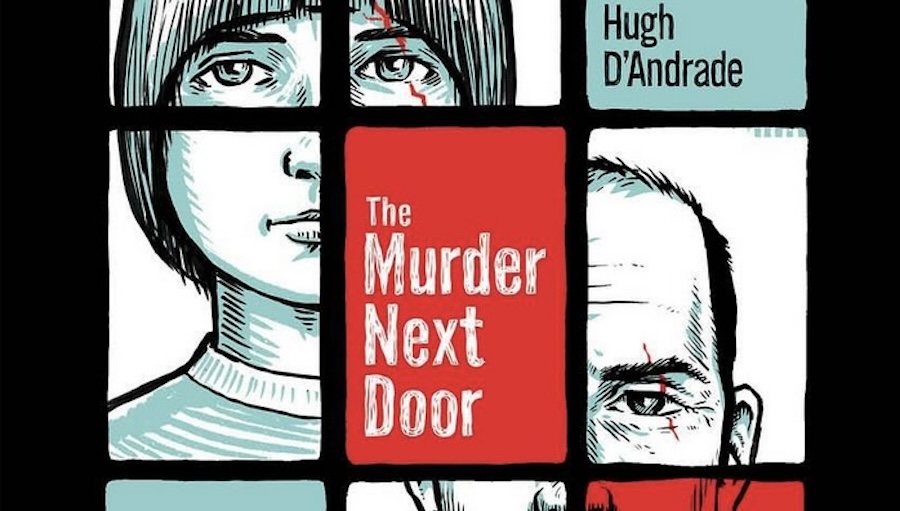The following is an interview with Hugh D’Andrade regarding the upcoming release of the graphic memoir, The Murder Next Door, through Street Noise Books. In this interview, Fanbase Press Editor-in-Chief Barbra Dillon chats with D’Andrade about his creative process in sharing his story with readers, how he hopes that readers may heal and grow from the sharing of his story, and more!
Barbra Dillon, Fanbase Press Editor-in-Chief: This month will see the release of The Murder Next Door. What inspired you to share your story with readers?
Hugh D’Andrade: When I was 10, my next-door neighbor was brutally murdered. She was the mother two boys who were my best friends; we discovered the body when we came home from school that day. I learned not to talk about it, but my mind continued to ruminate on it — for 40 years! When I did begin talking more about it, first with my therapist, and then with friends and even strangers at times, I found that many people have trauma they carry around and don’t talk about. I found that my trauma had been trying to teach me something, but I hadn’t been listening. So, this book is my attempt to share what I learned.
BD: In balancing the writing and artistic duties of the project, what can you share with us about your creative process in bringing this personal narrative to life on the page?

HD: The creative process was a long one. Probably it was more than 10 years ago that I first began to think about a graphic memoir on this subject. I have been a professional illustrator for 30 years, and I do consider myself a writer, as well, so I assumed that doing comic work would be a breeze, combining two passions. Wrong! I really found it difficult to combine these two ways of thinking – a word-based, literary thinking and an image-based, visual style of thought. I had to set the project aside several times, with years-long breaks in between.
And I also found the subject difficult, as you can imagine. Some of the memories were so painful that I was resistant to facing them, or I would have to pause working on them because they caused uncontrollable weeping.
I had to learn to write and draw simultaneously, or to alternate quickly between the two modes. I do write things out in notation form first, with snippets of dialogue or description thrown in. But before that text is too polished, I start drawing, and I work and re-work the text in tandem with the artwork. It’s a laborious, time-consuming process, but it works best for me. (I know many other comic artists like to have a detailed script, almost like a movie script, but that method didn’t work for me.)
In terms of style, I want my comic pages to look hand-drawn and non-mechanical. I rarely use rulers, and while I look at photos for reference, I don’t work directly from them — they go back in the folder while I’m drawing. I want the art to look like a re-constructed memory, not reality! I also hand-letter the text, because I like the feeling of intimacy the hand lettering creates.
BD: At Fanbase Press, our #StoriesMatter initiative endeavors to highlight the impact that stories can have on audiences of various mediums. How do you feel that the story – and your willingness to detail the process of healing from childhood trauma – may connect with and impact readers?
HD: I don’t know, and I’m so curious to find out! My hope is that readers may see some of the benefits of facing traumatic memories, rather than ignoring them or sweeping them under the rug. As I said, the memories have lessons for us, and there’s something to be gained from listening to them, and listening carefully. Among the few people who have read the book so far (friends, family, editors, reviewers), several have felt inspired to share events or traumas in their own lives. That gives me hope that at the very least, my book may encourage some healing conversations.
BD: What makes Street Noise Books the perfect home for your story?
HD: I was attracted to Street Noise Books by the quality of the production and the artwork, initially. Is that bad? I judge books by their covers. But this publisher also has a focus on social justice, and the healing potential of stories from diverse communities, and these are naturally things that I value, as well. I love paper, non-digital books, and I love stories about the human struggle. Street Noise is a home for all of that!
BD: Are there any other projects that you would like to highlight for our readers?
HD: I have a short booklet on the creative process, called Making Friends With Monkey. People can order that from my website, and there will be new, self-published booklets coming soon. I am hopeful that my next book-length project will not take ten years, but who knows?
BD: Lastly, what is the best way for our readers to find out more about The Murder Next Door?
HD: People can check out my website for more. I’m planning to have some posts about the process of making this book, including sketches and the tools, and discussing some of my ideas about comic literature — how comics work, why they are important, and how to make your own.

